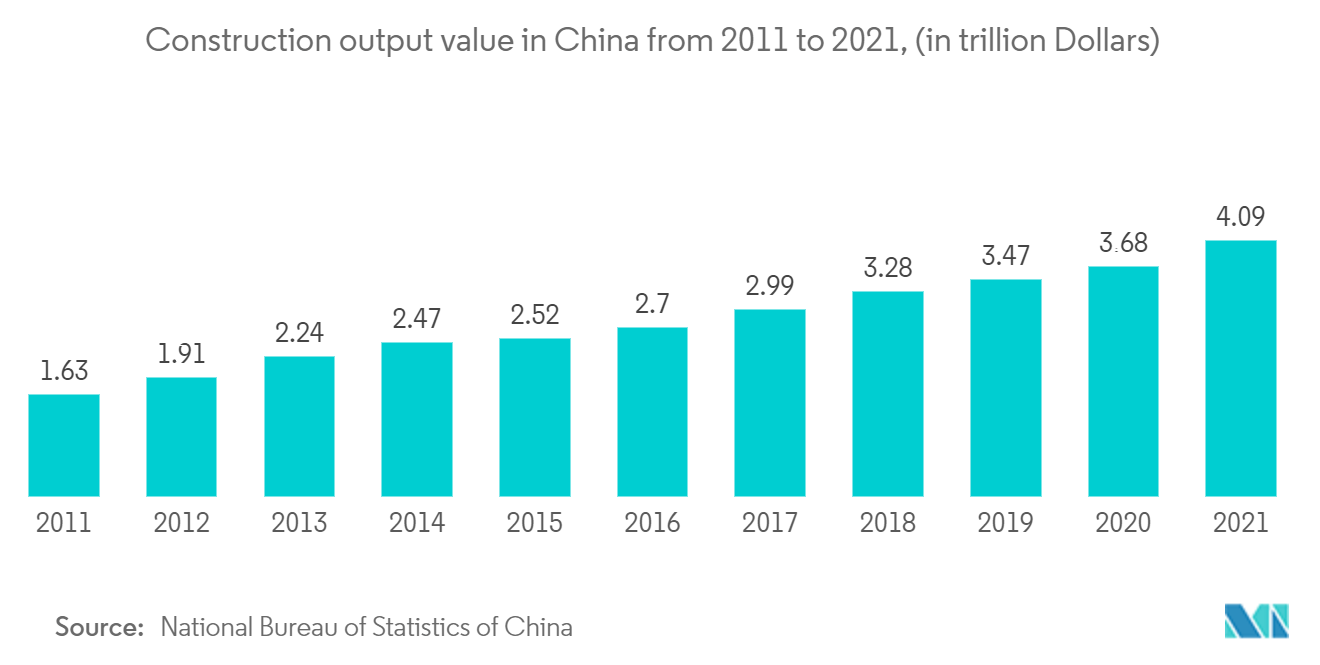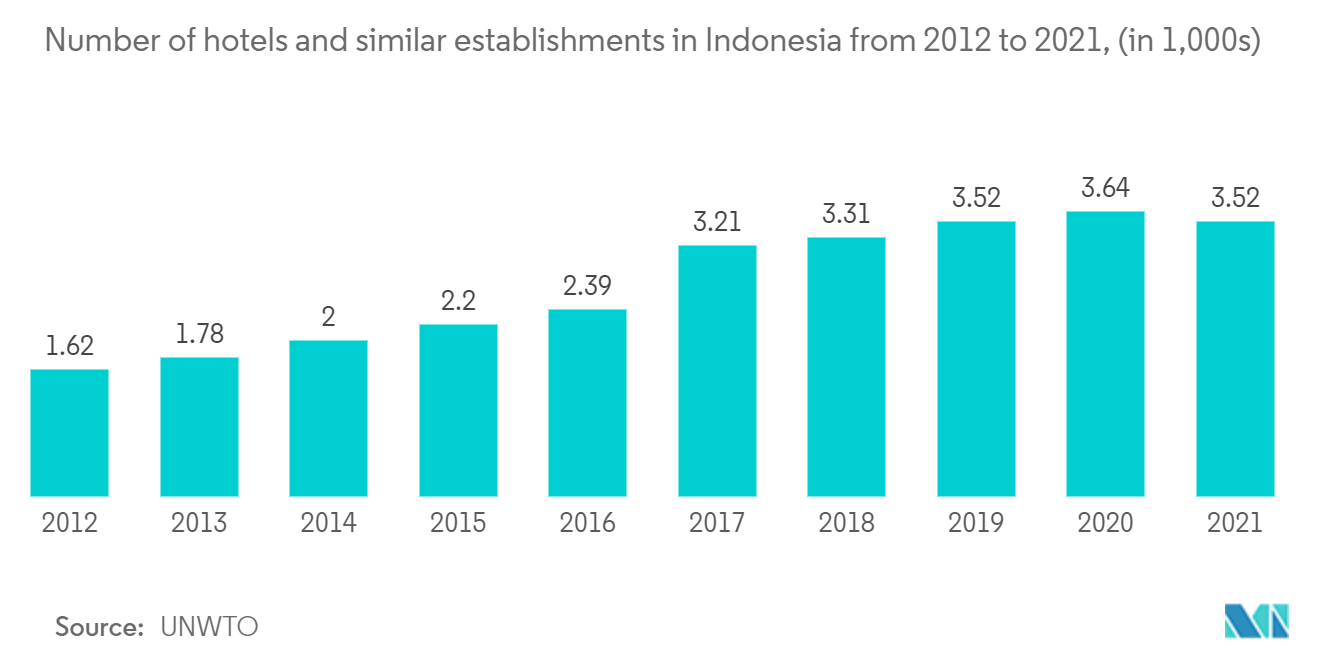Market Trends of Asia-Pacific Hard Facility Management Industry
This section covers the major market trends shaping the APAC Hard Facility Management Market according to our research experts:
Growth of Commercial Construction
- With the fast expansion of facility management outsourcing in several emerging regions, the Asia-Pacific HFM management market is expanding at an astonishing rate. Despite the economic difficulties, the Asia-Pacific building industry saw strong growth last year. In developed economies, demand for residential development remained high. On the other hand, infrastructure development saw more significant investment, and local construction firms moved into new markets. New investments in the Asia-Pacific commercial building sector have bolstered the facilities management sector.
- The infrastructure and construction industries are quickly expanding in emerging nations, and as a result, the HFM business is now witnessing a growing demand from various industrial sectors. Given that the infrastructure industry in the Asia-Pacific is predicted to increase, this expansion trend may be seen significantly throughout the area. Building materials, engineering, and construction are essential to post-pandemic rehabilitation for communities and economies.
- The Nationwide Smart Cities Mission is an urban rehabilitation and renovation initiative by the Government of India to create sustainable, smart cities across the nation. The industry initially targeted 100 cities, and the projects had a 2019-2023 completion window. Building ecological spaces, planned, articulated, and technologically compatible solutions with the assistance of information technology in the quest for increased efficiency is the long-term objective of smart city solutions, which can be efficiently addressed with the help of construction facility engineers in the country.
- In China, a significant uptick in building output is anticipated for last year. Also, China's commercial building industry is expected to overtake all others during the next decade. Moreover, there is an escalated rise in road and rail projects in Australia and Japan. The Southeast Asian region would witness a surge in construction due to the demand rise in the hotel industry. All this accumulated demand would boost the need for heavy machinery and HVAC services for the ongoing new building and projects.
- These statistics from the National Bureau of Statistics of China illustrate the production value of the construction sector in China from 2011 to last year, showing the industry's steady expansion. The value of China's building production peaked last year at roughly 29.3 trillion yuan.

Rebound of Hospitality Sector in Southeast Asia
- As borders reopen and operating performance returns to pre-pandemic levels, confidence in the Asia-Pacific hotel and hospitality industry is rising. The hotel business in South-East Asia appears to be quite promising, with Thailand, Vietnam, and Indonesia developing quickly, according to Tophotelprojects. According to the research, 568 hotel projects totaling 159,216 keys are planned for South-East Asia over the next two years. 352 of the 568 planned hotels would be four-star establishments, while 216 are five-star establishments.
- The fast growth of the building and construction sector due to increased commercial construction in this region is driving the HFM. The electrical and civil engineering services and the HVAC installation and maintenance from the new hospitality constructions are rising in Southeast Asia. Also, the rising construction of shopping centers and retail establishments is advancing the industry. This would cause a rapid demand hike in escalators, lift maintenance, and other hard facility services.
- Furthermore, post-covid HVAC Systems maintenance in hotels, malls, and regional entertainment centers are of utmost importance. The World Health Organization's recommendations state that there is still a great danger of SARS-CoV-2 airborne transmission inside. Safety professionals, building managers, and others may optimize a facility's airflow and ventilation to prevent the spread of viruses. Business owners prioritize maintaining the HVAC system to ensure proper filtration and ventilation are always maintained.
- New hotels are more likely to include high-quality fire protection, detection and alarm systems, and fire sprinklers in each guest room. If any smoke alarms are present, they may only be in older hotels' guest rooms. In contrast to restaurants and other comparable attractions, hotels do not emphasize fire safety. However, fire safety is a legitimate concern. A fire-safety facility manager can help create a fire prevention plan appropriate for the situation. Regarding training, equipment maintenance and protection, and legal and ethical requirements, it ensures that it is at par with all national and state fire safety legislation and standards.
- The number of hotels and other such businesses grew significantly in Indonesia from 2012 to last year. About 3.52 thousand hotels and other similar facilities existed in Indonesia in 2021, according to UNWTO data. However, last year, there were about 100 fewer of these businesses than the previous year.


